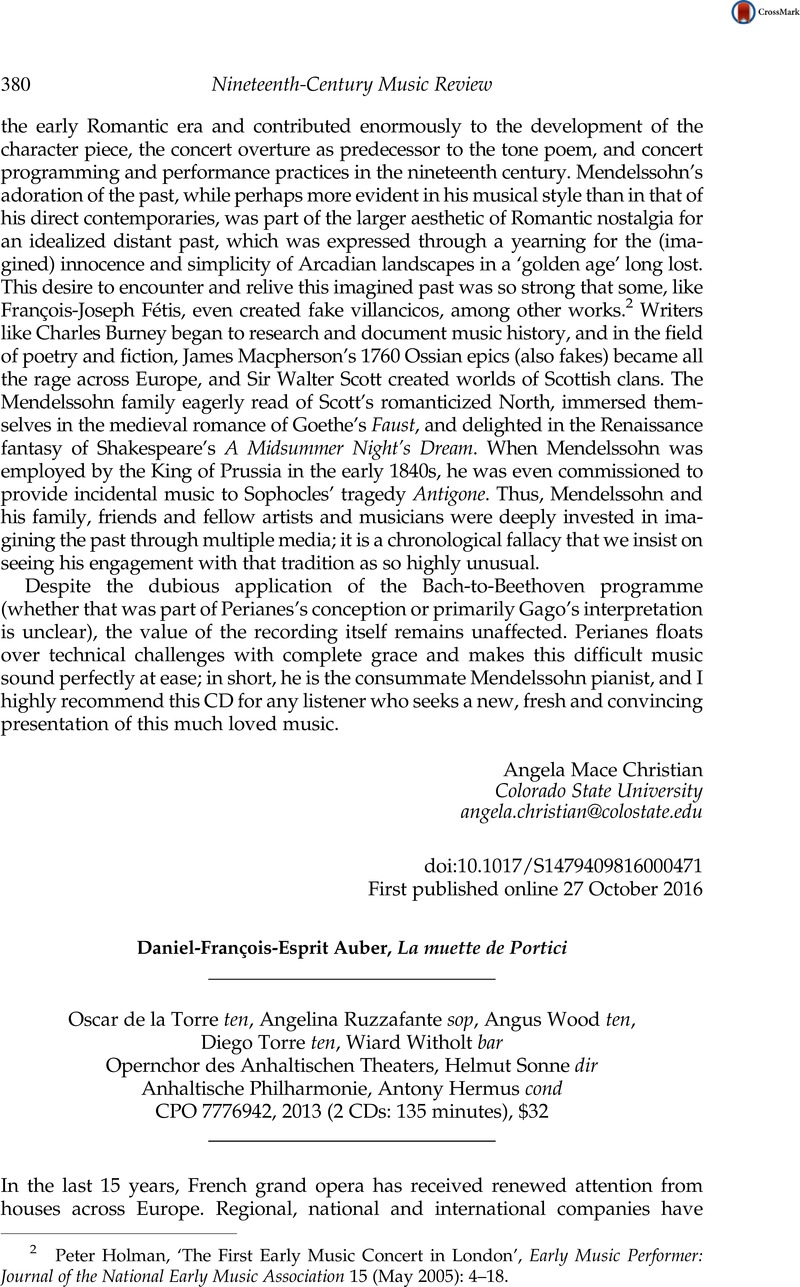No CrossRef data available.
Published online by Cambridge University Press: 27 October 2016

1 Such questions of vocal fach and characterization extend back to the 1820s and 1830s. See Clark, Maribeth, ‘The Body and the Voice in La muette de Portici ’, in 19th-Century Music 27 (2003): 116–131 CrossRefGoogle Scholar, for documentation of how audiences reacted to the switch from Adolphe Nourrit’s lighter sound to Gilbert Duprez’s heavier sound.
2 Historical and aesthetic questions raised by cutting nineteenth-century operas are considered in detail in Gossett, Philip, Divas and Scholars: Performing Italian Opera (Chicago: University of Chicago Press, 2006): 241–289 CrossRefGoogle Scholar.
3 See Clark, ‘Body and the Voice’, and Smart, Mary Ann, Mimomania: Music and Gesture in Nineteenth-Century Opera (Berkeley: University of California Press, 2004): 32–68 CrossRefGoogle Scholar.
4 Gossett, Divas and Scholars, contains numerous examples. See also Hepokoski, James, ‘Staging Verdi’s Operas: The Single, “Correct” Performance’, in Verdi in Performance, ed. Alison Latham and Roger Parker (Oxford: Oxford University Press, 2001): 11–20 Google Scholar.
5 Documented in Fauser, Annegret, ‘ Cette musique sans tradition: Wagner’s Tannhäuser and Its French Critics’, in Music, Theater, and Cultural Transfer: Paris 1830–1914, ed. Annegret Fauser and Mark Everist (Chicago: University of Chicago Press, 2009): 228–255 CrossRefGoogle Scholar.
6 This position has been advanced in Taruskin, Richard, Text and Act: Essays on Music and Performance (New York: Oxford University Press, 1995)Google Scholar.